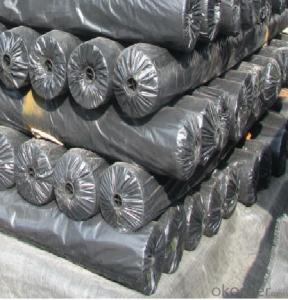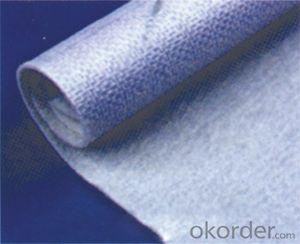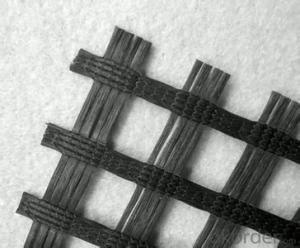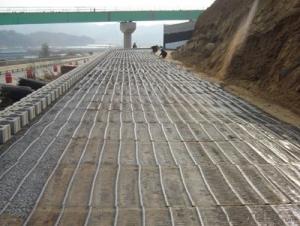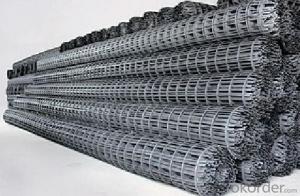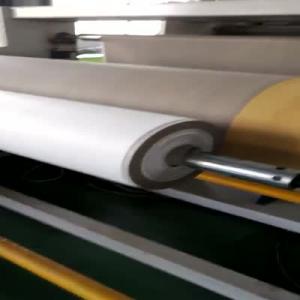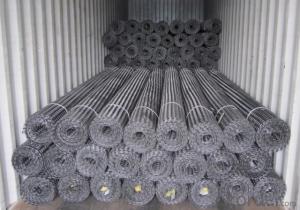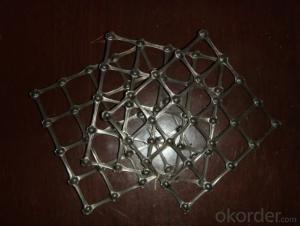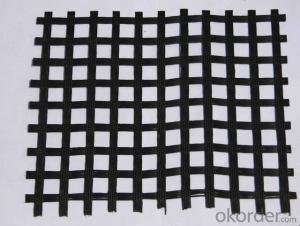Knitted Composite Geomembrane for Civil Construction
- Loading Port:
- Qingdao
- Payment Terms:
- TT OR LC
- Min Order Qty:
- 5000 m
- Supply Capability:
- 50000 m/month
OKorder Service Pledge
OKorder Financial Service
You Might Also Like
Specifications
High strength, anti-corrosion, tearing resistant and bursting resistant.
High strength polyester industrial yarns are adopted and, after treated with PVC laminating process, the geomembranes are abtained. These membranes prevent the permeation of water and change the defects of the current geomembranes with low strength and poor water resistance. As a result, they are widely used in such projects as the railroad foundation, dyke protective slopes, reservoirs, highway greenery belts, etc.
Application
Railroad foundations, tunnels, dykes, reservoirs, garbage filling fields, water-prevention and anti-permeation projects. Anti-seepage works of dyke. And application in anti-seepage works of water canal can save 80% of water.
Features
High strength, anti-corrosion, tearing resistant and bursting resistant.
Technical Parameters of Composite Geomembrane
Specification | PLGM-2020 | |
Performance | ||
Strength (kN/m) | Longitudinal | 20 |
Horizontal | 20 | |
Elogation | 30% | |
CBR strength (KN) | >2.5 | |
Thickness (mm) | >0.3 | |
Penetration coefficient (cm/s) | 10-11 | |
Width (m) | 2.5-3.5 | |
Length (m) | 30-50 | |
Functions
Ground stabilization
Drainage
Erosion control and re-vegetation
Revetment
Ground reinforcement
Asphalt underlayment
Road reinforcement
Features
1) Woven geotextile made on circle weave machine
2) Materials: polypropylene and other imported new materials
3) Weight per square meter: 80-700g/m²
4) Width: max. 6m
5) Perfect flexibility and against ultraviolet radiation and aging.
It can be widely used in areas of railways, highways, sport fields, earthwork projects, tunnels, coal mines, walls and slopes, environmental protection, and so on.
All colors and sizes can be customized.
Applications
1-Construction of roads and other trafficked areas (excluding railways and asphalt inclusion)
2-Construction of railways,
3-Earthworks, foundations and retaining structures,
4-Use in drainage systems,
5-Erosion control works (coastal protection, bank revetments),
6-Construction of reservoirs and dams,
7-Construction of canals,
8-Construction of tunnels and underground structures,
9-Use in solid waste disposals,
10-Use in liquid waste containment projects,
Woven Geotextiles Data Sheet
Item | Testing Method | Unit | ||
Grad Tensile Strength | ASTM-D 4632 | N | 890 | 1405 |
Grab Elongation | ASTM-D 4632 | % | ≤20 | ≤20 |
Puncture Strength | ASTM-D 4833 | N | 400 | 667 |
CBR Puncture | ASTM-D 6241 | N | 3200 | 4800 |
Mullen Burst | ASTM-D 3786 | kPA | 2578 | 4137 |
Trapezoidal Tear | ASTM-D 4533 | N | 500 | 750 |
Apparent Opening Size | ASTM-D 4751 | mm | 0.425 | 0.425 |
Permittivity | ASTM-D 4491 | Sec-1 | 0.05 | 0.05 |
Water Flow Rate | ASTM-D 4491 | 1/m/m2 | 163 | 163 |
UV Resistance | ASTM-D 4355 | % 500hrs | 70 | 70 |
Roll Width | m | 6 | 6 | |
Roll Length | m |
100 | 100 | |
Mass | GSM | 200 | 300
|
- Q:Do geogrids enhance the stability of mechanically stabilized earth walls?
- Yes, geogrids do enhance the stability of mechanically stabilized earth walls. Geogrids are commonly used in the construction of these walls to improve their structural integrity and prevent potential failure. They provide reinforcement by acting as tensile elements, distributing external forces, and increasing the overall strength of the wall system. Geogrids effectively resist lateral earth pressures, reduce wall deformations, and enhance the overall stability and longevity of mechanically stabilized earth walls.
- Q:Can geogrids be used in ground improvement projects?
- Yes, geogrids can be used in ground improvement projects. Geogrids are commonly used to reinforce and stabilize soil, improving its bearing capacity and preventing soil erosion. They are effective in a variety of ground improvement applications such as road construction, retaining walls, and slope stabilization.
- Q:Can geogrids be used in subgrade stabilization?
- Yes, geogrids can be used in subgrade stabilization. Geogrids are commonly used in civil engineering projects to improve the stability and load-bearing capacity of subgrade soils. They are installed within the subgrade layer to distribute loads and reduce soil movement, enhancing the overall performance and durability of the pavement or structure.
- Q:Can geogrids be used in reinforcement of soil-nailing systems?
- Yes, geogrids can be used in reinforcement of soil-nailing systems. Geogrids are commonly used in soil reinforcement applications, including soil-nailing systems, to provide additional stability and strength to the soil. They are typically installed behind the soil nails to distribute the loads and prevent soil movement, enhancing the overall performance of the system.
- Q:What is the meaning of 400g geotextiles /100g woven fabric
- Main production, geotextile, geogrid, geomembrane
- Q:How are geogrids manufactured?
- Geogrids are manufactured by extruding or weaving polymer materials such as polypropylene or polyester into a grid-like structure. This process involves melting the polymer, forming it into a grid pattern, and cooling it to create a strong and flexible geogrid.
- Q:What are the factors that affect the design of geogrid installations?
- The factors that affect the design of geogrid installations include the type and properties of the soil, the intended application or purpose of the geogrid, the anticipated loads and stresses the geogrid will need to withstand, the environmental conditions such as temperature and moisture, and any specific design requirements or regulations that need to be followed.
- Q:How long do geogrids typically last?
- Geogrids typically have a lifespan ranging from 20 to 75 years, depending on various factors such as the quality of the material, environmental conditions, and the level of stress they are subjected to.
- Q:How to determine the number of geogrid detection method
- What are the geogrid testing items1) place: in the surface layer of 50cm thick sand gravel or sand (egg) gravel cushion, and compaction, which is not only conducive to improve the friction between the soil and the grid, but also conducive to the consolidation of the foundation drainage.
- Q:Are geogrids suitable for reinforcing landfill caps?
- Yes, geogrids are suitable for reinforcing landfill caps. They are often used in landfill engineering to enhance the stability and integrity of landfill covers. Geogrids provide reinforcement by distributing loads and reducing stress concentrations, thereby preventing soil erosion and controlling deformation in the cap system. Additionally, geogrids can improve the long-term performance of landfill caps by increasing their resistance to settlement and enhancing their overall structural integrity.
1. Manufacturer Overview |
|
|---|---|
| Location | |
| Year Established | |
| Annual Output Value | |
| Main Markets | |
| Company Certifications | |
2. Manufacturer Certificates |
|
|---|---|
| a) Certification Name | |
| Range | |
| Reference | |
| Validity Period | |
3. Manufacturer Capability |
|
|---|---|
| a)Trade Capacity | |
| Nearest Port | |
| Export Percentage | |
| No.of Employees in Trade Department | |
| Language Spoken: | |
| b)Factory Information | |
| Factory Size: | |
| No. of Production Lines | |
| Contract Manufacturing | |
| Product Price Range | |
Send your message to us
Knitted Composite Geomembrane for Civil Construction
- Loading Port:
- Qingdao
- Payment Terms:
- TT OR LC
- Min Order Qty:
- 5000 m
- Supply Capability:
- 50000 m/month
OKorder Service Pledge
OKorder Financial Service
Similar products
New products
Hot products
Hot Searches
Related keywords
